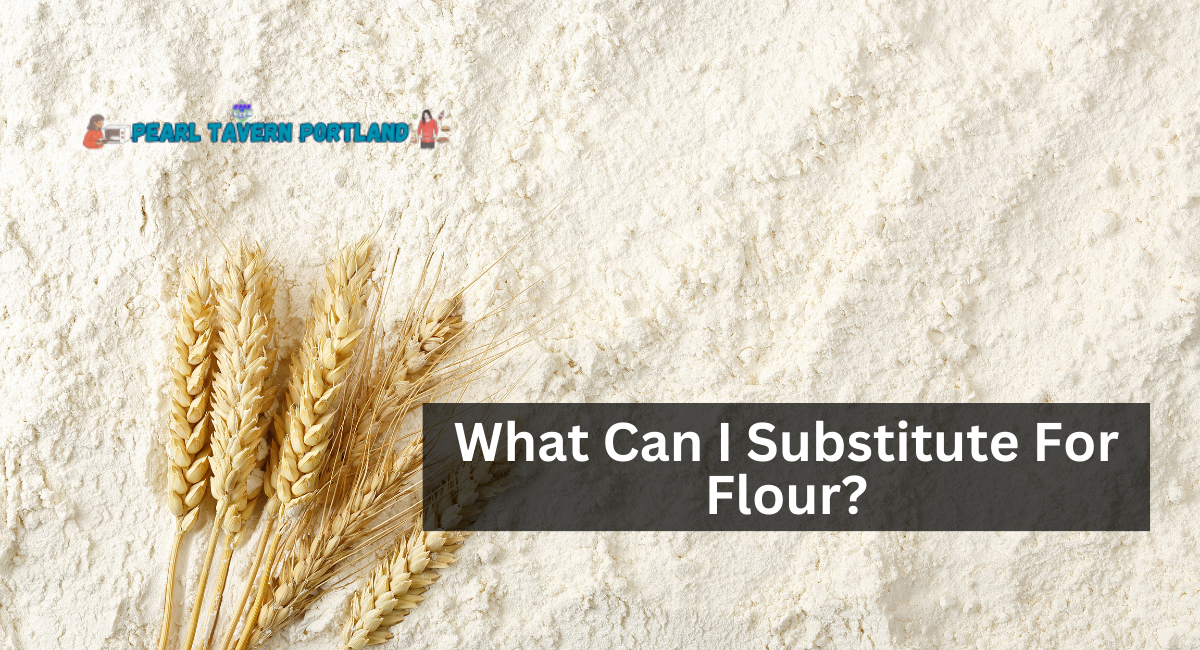In the contemporary culinary world, there is a growing demand for alternative ingredients, whether due to dietary restrictions, allergies, or the desire to attempt something new. Flour is one of these ingredients that often raises concerns. This article will walk you through the various alternatives to flour that you can use in your recipes, whether you’re out of flour and need a substitute or looking for healthier options.
Substitutes For Flour
Here are the substitutes for flour:
1. Chickpea Flour
This gluten-free flour is higher in fiber, protein, and iron than white flour because it is made from pulverized chickpeas. Generally, chickpeas, also known as garbanzo legumes, are ground raw but can be roasted beforehand. The opaque texture of chickpea flour makes it an excellent thickener or binder for sauces, cakes, and meatballs. Why not try it as the foundation for socca (chickpea pancakes)? Use a mixture of water and chickpea flour in place of cream or milk and a mixture of cashews in place of cheese to make pasta wholly vegan (illustrated above). Few will note that it is not a traditional Alfredo!
2. Rice Flour
Rice Flour Is Quite Tasteless on Its Own, but It Is an Extremely Versatile Ingredient for Asian Dishes. Rice flour is most frequently used to thicken sauces by mixing a small amount into a liquid. You can substitute gluten-free white rice flour, brown rice flour, or sweet glutinous rice flour like cornstarch. In Recipes, Brown Rice and White Rice Flour Are Substitutable but Add Different Flavors. Use approximately two teaspoons per cup of thickening liquid.
There Are a Few Recipes in Which Rice Flour Plays an Important Role, Even Though I Don’t Fry Very Often. Rice flour is one of the secret ingredients I use as a chef to make fried foods light and airy. It is used in everything from Japanese Tempura veggies to the ever-popular Korean fried chicken in Asia. It gives fried foods their signature pillowy crunch. Rice flour is a key ingredient in the famous Thai dish Chicken Larb, a chopped meat salad with Thai spices. Toasted rice flour is mixed with the meat to help hold the sauce together.
3. Almond Flour
All nut flours are made by grinding the parts of nuts that are left over after the oil has been taken out. Nut meals, on the other hand, are made by grinding the whole nut. I’ve learned that most nut flours can be used in place of each other in recipes. After Having Lived in Italy, I Became Obsessed with a Coffee Shop’s Almond-Orange Cake. A Recipe That Is Fairly Straightforward to Prepare, Consisting of Eggs, Sugar, Oranges, Vanilla Extract, and Almond Flour, It Is an Extremely Flavorful and Moist Cake. Sugar and nut flour make this less than ideal for a light dessert, but the absence of all-purpose flour and oil makes it healthier than a conventional cake. This recipe receives bonus points because I’ve previously prepared it on the stovetop and completed it in the oven.
All Nut Flour Enhance the Flavor of Baked Goods. Nut Flour May Contain More Calories. However, It Is Considered a Healthy Fat and Contains More Protein Than Regular and Alternative Flour, Which May Keep You Feeling Satisfied. I enjoy using a combination of nut flour and buckwheat to bread chicken cutlets. Creating Nut Flour at Home Using a High-Speed Blender Is Extremely Straightforward.
5. Buckwheat Flour
Buckwheat flour is the newest thing I’ve used in my cooking. Even though the name suggests otherwise, it comes from a seed. This “It Flour” is great for making pancakes, muffins, and savory crêpes. Buckwheat flour has a strong flavor and an aftertaste like nuts. It is high in fiber and protein. At first glance, the flour looks darker than other flours, but it has a wonderful, distinct, lightly floral taste and can be used in sweet and savory dishes. Buckwheat flour can be used on its own or with other gluten-free flour like brown rice flour or all-purpose flour to make recipes for people who can’t eat gluten or want to eat less flour. If you want to try something new, use buckwheat flour to make soba noodles, blinis, or these Piece-of-Cake pancakes at home.
6. Coconut Flour
Coconut flour is produced by dehydrating and grinding dried coconut pulp. It has a High Fiber Content. Coconut Flour Is Not Suitable for 1:1 Substitutions Because It Bakes Very Dissimilarly to White Flour and Other Flour Substitutes, Absorbing a Great Deal of Moisture and Producing a Denser, Weightier Texture. Sharp states that more eggs or moist ingredients are required for performance. She finds it ideal for quick bread containing moist ingredients like banana bread.
7. Amaranth Flour
Gluten-free and Rich in Protein, Ground Amaranth is Made from an Ancient Grain That Contains Numerous Amino Acids that are Absent in Most Flour. Amaranth Flour Is Usually Included in Recipes in a 50:50 Ratio with Another Lighter Flour (Such as All-Purpose or White Whole-Wheat Flour) to Achieve the Closest-To-Classic Texture.
8. Cassava Flour
Cassava flour is made from yuca root and is garnering popularity as a gluten-free and Paleo-friendly substitute for wheat flour. When our test kitchen baked with cassava flour, the chefs noted that it tends to absorb more liquid than other flour varieties. If using as an All-Purpose Flour Substitute, use a small amount less than the amount called for and gradually add the complete amount if the batter appears too wet.
9. Oat Flour
This alternative to flour is made from ground oats. High in Fiber and Slightly Sweet, Oat Flour Is Often Used as a Substitute for White or Wheat Flour in Homemade Bread, Pancakes, and Other Baked Goods. It Can Be Made Easily at Home by Pulverizing Whole Grain Oats (Gluten-Free for Allergy Sufferers) in a Blender or Food Processor ($70, Target) Until It Resembles Flour.
10. Quinoa Flour
Quinoa Flour Is a “Good Alternative for People Who Can’t Have Wheat.”This higher-protein flour is available in stores and can be made home with uncooked quinoa seeds. Breads, muffins, and crepes can be made with quinoa flour. Cording explains that it does not always retain its shape like other flours, so she suggests combining it with other flours for a superior outcome.
11. Rye Grains
The Whole Grains Council says that rye flour is made from rye seeds, a type of cereal grain that can be light or dark in color depending on how much whole grain it has. Dark Rye Flour Typically Contains More Whole Grain Than Light Rye Flour, Making It Higher in Fiber and Denser in Texture.
Rye Flour Has a Malty, Earthy, Slightly Sour Taste That “Adds Complexity” to Baked Goods Such as Crackers and Traditional Rye Bread. Although it is less commonly used in sweet baked goods, according to Hartley, it enhances rustic desserts such as crumbles.
Thanks for visiting our site hope you like it ..










